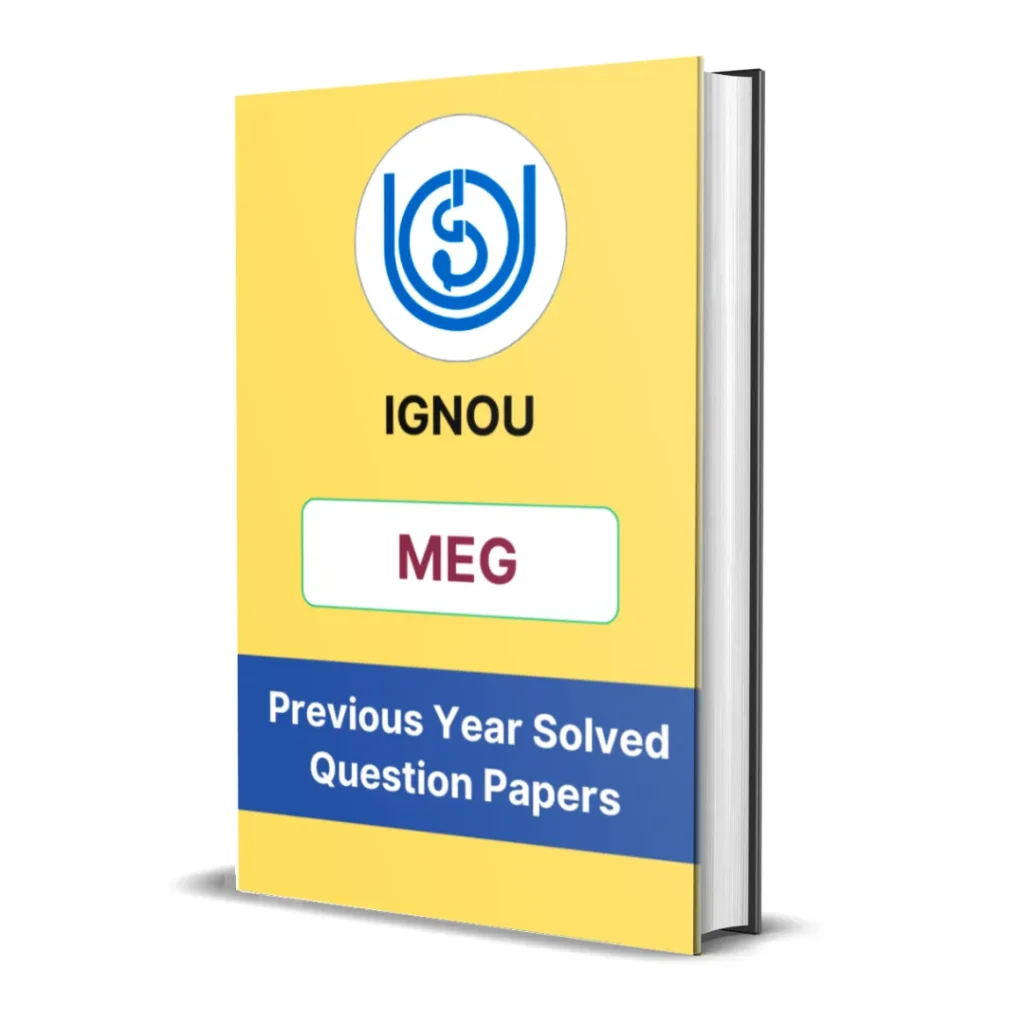MEG-04 Block 2 Summary | History of English Language
- Last Updated On August 13, 2025
Table of Contents
Here you will get the detailed summary of IGNOU MEG 4 Block 2 – History of English Language.
We have provided the summary of all units starting from unit 1 to unit 4.

Introduction
Block 2 of the IGNOU MEG-4 course, titled History of the English Language, provides a chronological and analytical overview of the evolution of English from its early roots to its modern forms. It covers major linguistic changes in sound, spelling, vocabulary, and grammar, showing how historical, social, and political factors have shaped the language. The block also emphasizes how English has transformed through contact with other languages and internal developments, equipping students with an understanding of language change as a natural and continuous process.

Unit 1 – An Introduction
This unit sets the stage by tracing the origins and broad evolution of English through different historical periods:
-
Old English (c. 450–1150): Influenced by Germanic tribes (Angles, Saxons, Jutes); featured inflectional grammar and vocabulary of Germanic origin.
-
Middle English (c. 1150–1500): Marked by Norman invasion (1066), which brought heavy French influence in vocabulary and legal, administrative terminology.
-
Early Modern English (c. 1500–1700): Shakespeare’s time, characterized by standardization, printing press influence, and influx of Latin and Greek words.
-
Modern English (from 1700 onwards): Stabilization of spelling, grammar, and growing influence of global contact due to colonization and trade.
The unit also introduces the concepts of:
-
Language change as a gradual and inevitable phenomenon.
-
The role of social, political, and technological factors in shaping language evolution (e.g., printing press, colonialism, education systems).

Unit 2 – Changes in Sounds and Spelling
This unit examines how English pronunciation and spelling have changed over time, often independently of each other, resulting in inconsistencies in modern English orthography.
Key concepts discussed include:
-
The Great Vowel Shift (15th–18th centuries):
-
A major change in the pronunciation of long vowels in English.
-
For example, the pronunciation of “bite” changed from /biːtə/ to /baɪt/.
-
It marks the transition from Middle English to Modern English.
-
-
Spelling inconsistencies:
-
English spelling did not always evolve with pronunciation, leading to silent letters and irregular forms.
-
The introduction of the printing press and printers like William Caxton helped standardize spelling, but often preserved archaic forms.
-
-
Phonological changes:
-
Loss of certain consonant sounds (e.g., the “gh” sound in “night”).
-
Weakening of unstressed syllables and simplification of sound patterns over time.
-
This unit highlights the non-phonetic nature of English spelling, making it both rich and challenging for learners.
Unit 3 – Changes in Vocabulary
This unit explores the expansion and transformation of English vocabulary through various processes:
-
Borrowing: English has absorbed words from many languages due to invasion, trade, colonization, and cultural exchange.
-
French (e.g., justice, court, fashion)
-
Latin and Greek (e.g., scientific, religious, academic vocabulary)
-
Scandinavian (e.g., sky, window, knife)
-
Colonial influences: Words from Indian languages (e.g., shampoo, bungalow), African, Arabic, and others.
-
-
Word formation processes:
-
Compounding (e.g., blackboard)
-
Affixation (e.g., happiness, unkind)
-
Back-formation, conversion, clipping, and blending
-
-
Neologisms and slang: Introduction of new terms due to technology (e.g., “internet,” “hashtag”) and cultural shifts.
-
Semantic change:
-
Broadening: “Holiday” once meant only “holy day.”
-
Narrowing: “Meat” once meant any kind of food.
-
Shift in meaning: “Nice” once meant foolish.
-
This unit emphasizes how English vocabulary is flexible and adaptive, making it one of the most lexically rich languages in the world.

Unit 4 – Changes in Grammar
The final unit focuses on how English grammar has simplified and evolved over centuries.
Main developments include:
-
Loss of inflection:
-
Old English had a highly inflected system (e.g., case endings like -um, -an).
-
Modern English relies more on word order and prepositions for meaning.
-
-
Changes in verb system:
-
Emergence of periphrastic constructions (e.g., “do-support” in questions and negatives: “Do you know?” vs. older “Know you?”).
-
Simplification of tense and aspect systems.
-
-
Pronoun changes:
-
Loss of thou/thee/thy in favor of you.
-
Development of gender-neutral pronouns in modern times.
-
-
Word order stabilization:
-
English has become more rigid in its Subject-Verb-Object structure.
-
The unit also discusses how prescriptive grammar rules emerged in the 18th century with grammarians like Lowth and Johnson, attempting to fix and standardize usage—often based on Latin models.